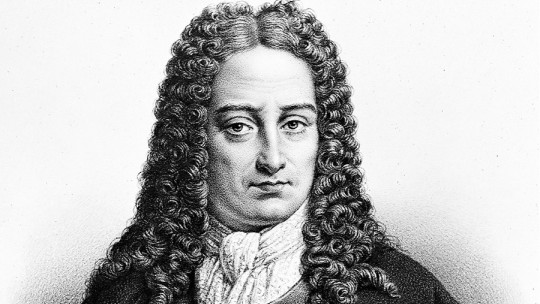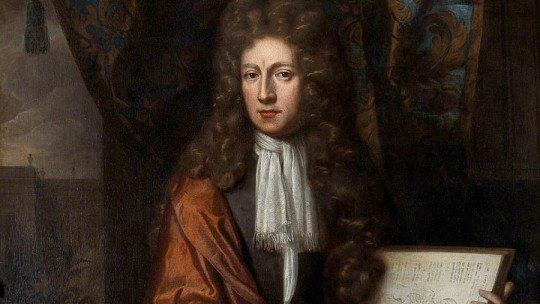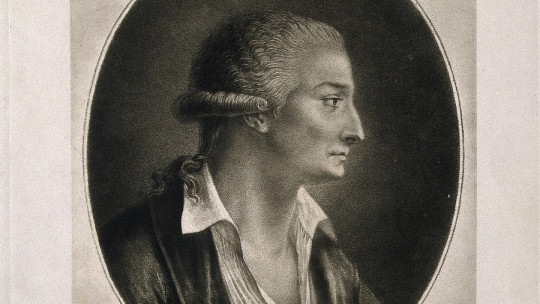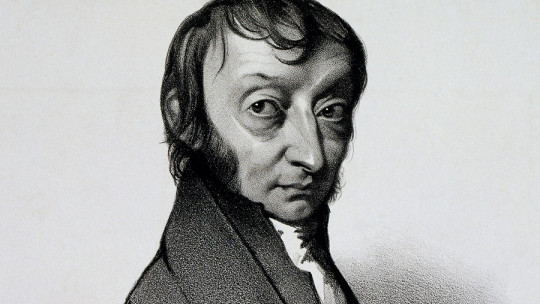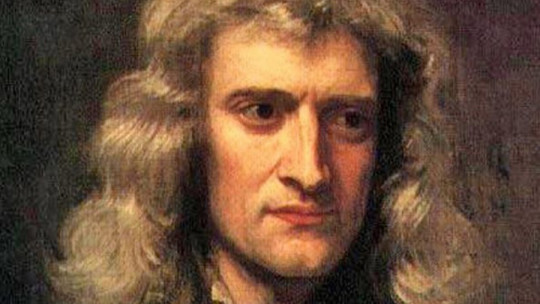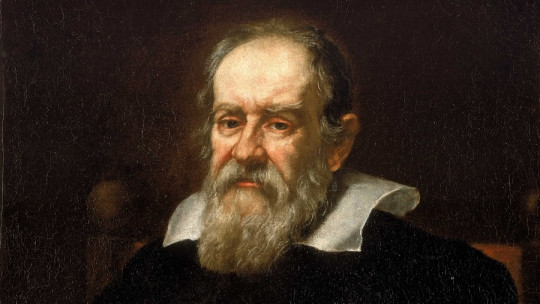
Among the great figures who have shaped the scientific revolution during the Renaissance we can find the figure of Galileo Galilei who, and not in vain, is considered the father of modern science
This Italian mathematician, physicist and scientist has contributed enormously to science, in addition to having changed the paradigm about the position of the Earth in the Universe, something that made the ecclesiastical authorities very uncomfortable.
Next, In this biography of Galileo Galilei, we will discover the great genius that this researcher was a firm believer that the world could be explained through mathematics, a discipline that he always applied in his numerous experiments without which our world would be very different.
Brief biography of Galileo Galilei
Galileo Galilei was an Italian physicist, mathematician and astronomer who dedicated most of his life to teaching and researching how nature worked, that is, the laws that governed the Universe. Through his observations, findings and experiments, the Italian scientist laid the foundations of modern astronomy and physics, in addition to being considered one of the fathers of modern science. Let’s start with the first years of his life, and then move towards his maturation as a scientist.
Childhood and early years
Galileo Galilei He was born in the Italian city of Pisa, then the Grand Duchy of Tuscany, on February 15, 1564 He grew up in a family of merchants who, until the age of 10, were personally involved in the training of the young Galileo. However, once he had reached that age, the family had to emigrate to Florence and since they could not take care of Galileo, they left his education in charge of a neighbor.
His neighbor was a very religious man, who considered it appropriate for the boy to enter a convent. When Galileo’s father found out about this, he did not take it well at all, since it so happened that he had very little as a religious person.
He decided to take the young man out of the convent and, years later, in 1581, he ordered him to enroll at the University of Pisa to study medicine. Galileo spent four years enrolled in that race, but it did not arouse great interest in him and he ended up abandoning it at the age of 21, without receiving the title.
Although his hobby was not medicine, this did not mean that he was not at all interested in the highest knowledge, but rather the opposite. The young Galileo Galilei had a great interest in mathematics, who were guilty of not having invested enough hours of study in the practice of medicine. As time went by, mathematics would end up giving way to his true vocation: physics.
Professional life
Now in his twenties, Galileo began to carry out mechanical experiments, something that did not go unnoticed by various teachers His self-taught knowledge in mathematics was so magnificent that, at only 25 years old, he won a position as a mathematics professor at the same University of Pisa. Later, in 1592, Galileo moved to Padua and began working as a professor at the university there, teaching disciplines such as astronomy, mechanics, and geometry.
His stay in Padua would be a prosperous time. In the 18 years that he was in such a city, leaving in 1610, it would be the period in which he would make most of his discoveries. Although the long shadow of the Holy Inquisition loomed throughout Europe, the city of Padua was a place far from religious repression, with which Galileo was able to enjoy relative freedom of thought and opinion, in addition to being able to do all kinds of things. of experiments.
Being in Padua established the law that explained the accelerated motion of objects he observed the stars, checked the operation of the water pump, created the precursor of the thermometer, studied magnetism… In fact, one of the peak moments of his professional career occurred there, in 1609, the year in which he perfected the telescope and He was able to observe the night sky in a way that no one had ever achieved before, and obtained the findings that allowed him to cast doubt on the geocentric theory.
Heliocentric theory and visit to Rome
Thanks to his improvement of the Galileo telescope, Galilei would obtain enough data to dare to cast doubt on one of the main beliefs inherited from the Middle Ages: the geocentric theory or put another way, the Earth is the center of the Universe.
Through his observations he came to the conclusion that the Sun was the center of the galaxy and not our planet, and he did so using the scientific method, not based on his beliefs or baseless assumptions.
In turn, since the Earth was not the center of the Universe, our planet moved. So Galileo confirmed the theory of Nicholas Copernicus that he had formulated years ago in which he himself said that the Earth was not the center of everything Heliocentrism was given strength. His observations with the telescope helped him demonstrate that the celestial bodies did not revolve around the Earth, but rather the planets revolved around the Sun.
In 1611 he traveled to the papal capital, Rome, with the intention of presenting his revolutionary findings Rejecting the model that until then had been widely accepted in Renaissance society attracted the attention of many scientists and also the rejection of most ecclesiastical authorities. To affirm that the Earth was not the center of everything was to attack one of the fundamental pillars of the Church and the Christian religion.
The censorship was immediate and in 1616 the Holy Inquisition prohibited Galileo from defending, disseminating, teaching and supporting the heliocentric theory. Despite the repression against his science, Galileo continued to investigate and continued to develop his studies, in addition to publishing works. To circumvent censorship instead of “defending” heliocentrism, he presented this idea as a hypothesis, with which, technically, he was not defending her, but explaining. An intelligent and subtle nuance that allowed him to continue publishing for a while.
Condemnation and death
Decades passed and, perhaps a little tired of having to present a scientific fact as a mere hypothesis, in 1632 he published a work in which he openly defended the heliocentric theory: Dialogues on the two largest systems in the world. This time The Inquisition soon realized this and began to investigate this case as heresy A year later, at the age of 69, Galileo was tried in Rome for failing to comply with the censorship of 1616, treating him as a crime and threatening him with torture.
Galileo Galilei ended up being forced to deny the heliocentric theory and its findings. After rejecting his ideas, his sentence was reduced to house arrest which, although unjust, was preferable to being tortured with the most ingenious inquisitorial devices. Legend has it that, while leaving the courthouse, he whispered “Eppur si muove”, (“However, it moves”), alluding that no matter how much censorship, persecution and denial of the facts, the Earth would continue to move as he had observed.
His house arrest lasted from 1633 to 1638, the year in which he became blind. The Holy Inquisition had a bit of Christian charity when it saw that Galileo Galilei could no longer see and accepted that he be moved to a home near the sea.
Finally, On January 8, 1642, at the age of 77, the scientist died He died rejected by his followers who did not forgive him for surrendering to inquisitorial pressure and seen as a heretic by the Holy Church, an institution which recognized the error of condemning him in 1992. Better late than never.
Contributions to science by Galileo Galilei
Galileo Galilei He firmly believed that everything that happened in nature could be explained through mathematical language Thanks to his mathematical knowledge and the way he applied it, Galileo managed to make the world see that without numbers, human beings would never be able to understand how the Universe works. With his numbers and developing the scientific method, the Italian scientist destroyed several of the beliefs that were still widespread in the Renaissance mentality.
Observing the night sky through his telescope he demonstrated that the Sun was the center of the solar system and that the Earth, unlike what was thought at the time, revolved around it. Thus he sought to demonstrate that the classical theory of geocentrism was not true and, although with its limitations, the heliocentric theory was. This discovery, along with others, made Galileo Galilei one of the most important figures of the 1500s, turning the world from being dark and medieval to bright and Renaissance.
Furthermore, he was a great man of science who He even confronted the Holy Church in order to defend his scientific findings No matter how much religion wants to look the other way or deny a finding, facts are facts, and no belief or unfounded assumption can change them.
Below we will see the main contributions to science made by this Italian scientist, considered the father of modern science.
1. Scientific method
Galileo Galilei is not considered one of the fathers of modern science because, in fact, He could be considered the father of modern science since it is he who we must thank for the development of the scientific method.
He was a firm defender that research should be based on the formulation of a hypothesis that, depending on the findings and different empirical tests, was going to be rejected or accepted.
2. Heliocentric theory
Galileo Galilei’s heliocentric theory was what caused him to have to face the courts of the Inquisition. This contribution is considered the definitive moment in the divorce between the Church and Science
With his observations Galileo gave strength to the Copernican theory, which argued that the Earth revolved around the Sun and not the other way around. This theory was one of the greatest scientific revolutions in history since broke with the belief that man was the center of the Universe
It should also be said that Galileo was wrong when he thought that the Sun was the center of the Galaxy. It was indeed the center of the Solar System, but today we know that the Sun orbits around other larger celestial objects and that its position in the Milky Way is rather peripheral.
3. Invention of the telescope
Technically, he was not the one who invented the telescope from scratch, since other similar objects already existed with lenses that allowed objects to be seen larger. However, It was the ingenuity of Galileo Galilei that allowed these devices to be improved creating the first telescope as we know it today, an instrument that could magnify celestial bodies up to 30 times.
4. Observations in the firmament
Thanks to the development of his telescope Galileo was able to observe the sky like no one had done before. He was the first to observe the craters of the Moon, sunspots, the four largest satellites of Jupiter, the phases of Venus and other astronomical phenomena and bodies. Also He was the first to reveal that there were more stars in the Universe than could be seen with the naked eye
5. Laws of motion
Galileo Galilei served as an inspiration and was also the precursor of the laws of motion, which would be postulated several years later by the English physicist and mathematician Isaac Newton. Galileo observed that All objects accelerated at the same rate when falling from the same height, regardless of how large or heavy they were From that he concluded that forces were the cause of movement, meaning that if no force was applied to an object, it did not have to move.
6. Development of mathematics
In his youth, Galileo Galilei became interested in mathematics and believed that it could explain the laws of how the world worked. Mathematics was a fundamental tool to understand nature since the world was governed by numbers.
He was one of the first scientists to base his research on mathematics, using numbers as tools to analyze and understand the phenomena that occurred in nature
7. Precursor of the thermometer
Galileo Galilei is also credited with creating the precursor to the thermometer, called a thermoscope. It was a fairly rudimentary tool to our eyes but complex for its time that was used to measure temperature.

